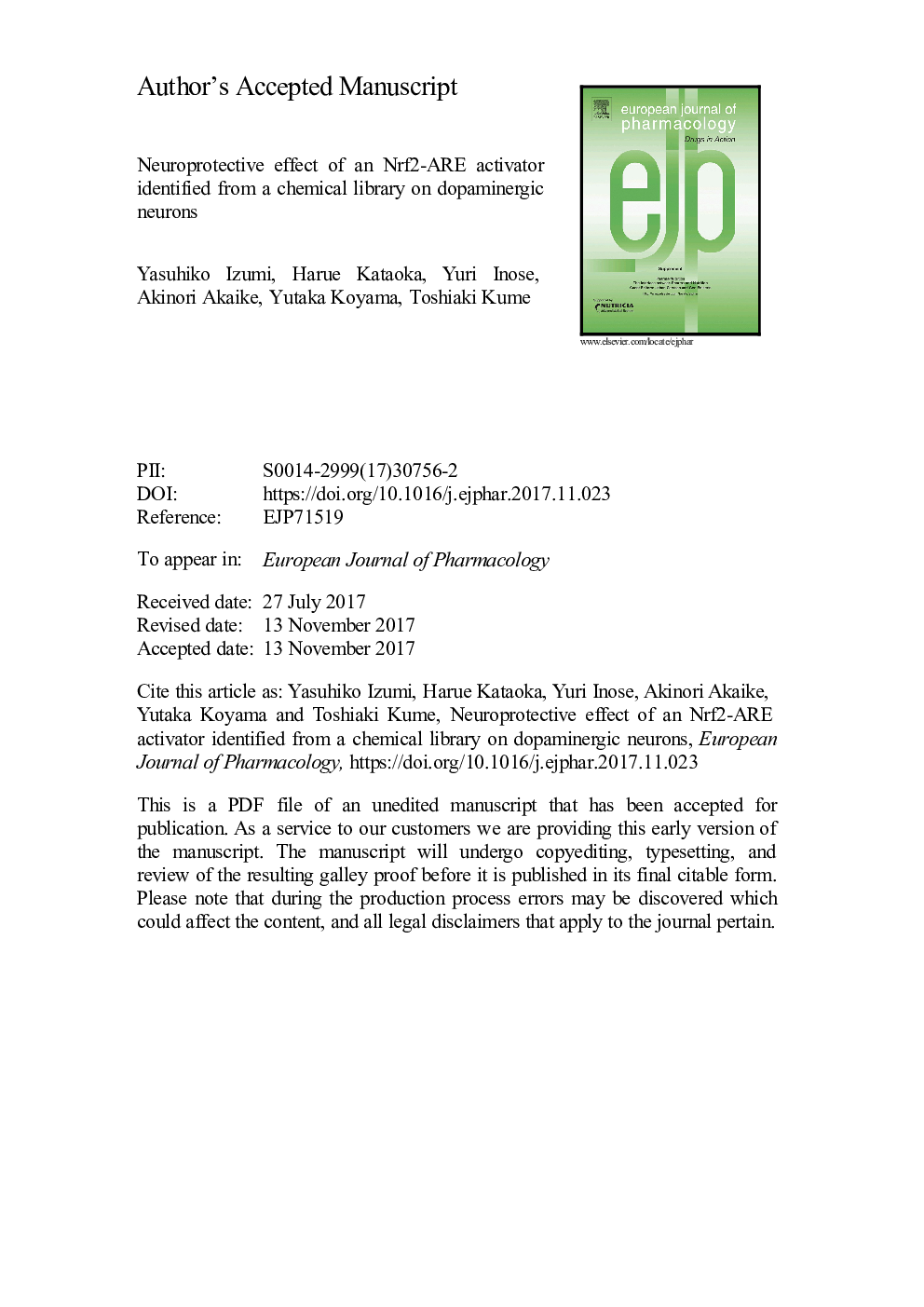| Article ID | Journal | Published Year | Pages | File Type |
|---|---|---|---|---|
| 8529751 | European Journal of Pharmacology | 2018 | 42 Pages |
Abstract
The nuclear factor erythroid 2-related factor 2 (Nrf2)-antioxidant response element (ARE) pathway, which induces the production of antioxidant enzymes, is a possible therapeutic target for treating diseases related to oxidative stress. Nrf2 activators often exhibit cytotoxicity due to nonspecific electrophilic reactions with thiol groups. We screened a chemical library to explore Nrf2 activators with a wide safety margin. In at least in vitro experiments, TPNA10168, identified from the library, showed a higher efficacy in Nrf2 activation and a lower cytotoxicity than sulforaphane, a well-known Nrf2 activator. The present study demonstrated the protective effect of TPNA10168 against 6-hydroxydopamine-induced cytotoxicity. In PC12 cells, NAD(P)H:quinone oxidoreductase 1 was upregulated by TPNA10168 and participated in the protective effect. In primary mesencephalic cultures, heme oxygenase-1, upregulated by TPNA10168 in astrocytes, provided protection of dopaminergic neurons via a guanylate cyclase/protein kinase G signaling pathway via carbon monoxide. These results suggest that the compound identified from the chemical library may be suitable as a neuroprotective agent with the ability to induce antioxidant enzymes.
Related Topics
Life Sciences
Neuroscience
Cellular and Molecular Neuroscience
Authors
Yasuhiko Izumi, Harue Kataoka, Yuri Inose, Akinori Akaike, Yutaka Koyama, Toshiaki Kume,
